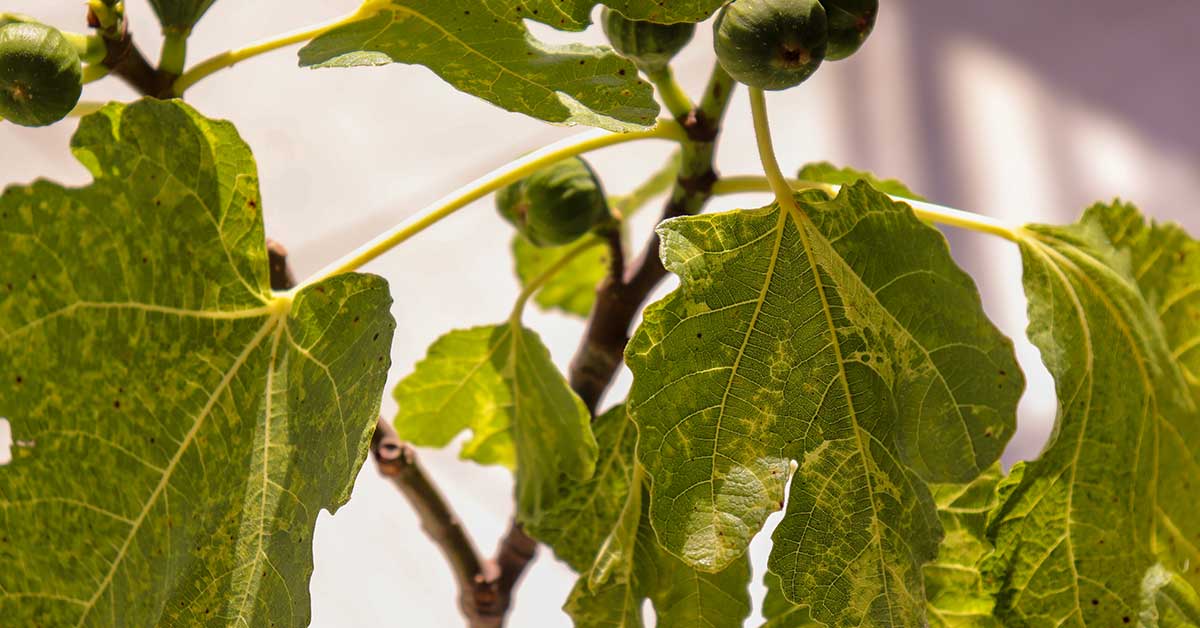Gardeners like to grow fig trees because they are attractive, easy to care for, and produce delicious fruit. The leaves of the fig tree are an attractive deep green color, making them an attractive addition to any garden. They require minimal care, and they are generally very hardy. Plus, they produce sweet, juicy fruit. However, when the leaves of a fig tree turn yellow and die, it can be quite troubling for gardeners. This could be caused by a number of issues such as nutrient deficiency, water stress, or pest infestations. If not addressed quickly, the tree could die, resulting in a loss of the fruit and the aesthetic value of the tree. If your fig leaves are turning yellow, this article will help you understand why.
Why your fig tree leaves are turning yellow
A healthy fig tree will have well-developed roots, deep green foliage, and a sturdy trunk. The tree will have an abundance of figs that are plump and ripe. The branches should be evenly spaced and well-supported by the trunk. Pruning and trimming are also important for a healthy fig tree, as it helps to maintain a balanced shape and encourages fruit production. If your fig tree is turning yellow, these are the most common reasons why:
Insufficient sunlight
When fig tree leaves are exposed to insufficient sunlight, they may start to turn yellow. The yellowing of the leaves is an indication that the tree is not getting enough light. If this condition persists, the tree may become weak and susceptible to disease. The best way to prevent this is to ensure the fig tree is receiving adequate sunlight. Fig trees need at least 6 hours of sunlight every day.
Nutrient deficiency
A nutrient deficiency in yellow fig trees can cause the leaves to become yellow or chlorotic. Chlorosis is often caused by an inadequate amount of iron, manganese, or zinc in the soil. This can lead to poor growth and an overall weakened condition of the tree. Foliar applications of the deficient nutrient can help treat the problem, but long-term success can only be achieved with a proper soil management program that includes regular testing and fertilization of your fig tree with a balanced fertilizer to ensure adequate nutrient levels.
Too much nitrogen fertilizer
Nitrogen burn is a common issue with yellow fig trees, resulting in the yellowing of the tree’s leaves. Nitrogen burn is caused by too much nitrogen in the soil, as nitrogen is an essential nutrient for the tree’s growth. To prevent nitrogen burn, it is important to fertilize the yellow fig tree with balanced nutrients and to monitor the soil’s nitrogen levels. Additionally, it is important to ensure that water is not too alkaline or acidic, as this can also cause the yellowing of the leaves.
Improper watering
Too much or too little water can cause yellow fig tree leaves. Too much water can cause the leaves to become yellow due to a lack of oxygen in the soil. When the soil is too wet, it can cause root rot, which can cause the leaves to turn yellow. Too little water can also cause yellowing as the tree will not be able to transport enough nutrients and water to the leaves. The leaves will eventually turn yellow and fall off if the tree is not watered regularly. It is important to water your fig tree regularly. Fig trees typically require 1-2 inches of water per week. During hot, dry weather, you may need to water more often. To check if your fig tree needs water, stick your finger in the soil around the tree. If it feels dry down to your first knuckle, it’s time to water.
Mites and spidermites
Mites are a common pest of fig trees, and they can cause leaves to turn yellow. These mites feed on the underside of the leaves, sucking out the sap and causing the leaves to yellow, curl, and drop prematurely. To treat a fig tree infested with mites, apply insecticidal soap or horticultural oil to the leaves and stems. Be sure to spray both the top and bottom of the leaves to ensure full coverage. Also, be sure to target the mites directly as they often hide on the underside of the leaves. Finally, prune off any heavily infested branches to reduce the severity of the infestation.
Fig rust
Fig rust is a fungal disease that can cause serious damage to fig trees and their fruit. It is spread by wind, rain, and insects, and can quickly spread from tree to tree if not properly managed. Fig trees are definitely a plant worth protecting if you love the taste of freshly harvested figs. The fruits are considered a delicacy to some. They naturally thrive in dry, warm, Mediterranean type of climates.
To prevent fig rust, it is important to practice good cultural practices such as pruning, fertilizing, and mulching. Furthermore, pruning should be done regularly to remove diseased or damaged leaves, twigs, and branches. Fertilizing with a balanced fertilizer can help trees grow healthy and vigorously.













